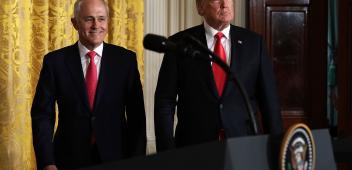Innovation doesn't begin at a G-20 summit meeting
Originally published in the Wall Street Journal.

Executive Summary
When Alan Greenspan published his memoir in 2007, the Federal Reserve's former chairman predicted, among other things, that by 2030 there would be a turnaround in the global economy, thus setting it free from the lull in productivity growth that had beset the mid-2000s. "History tells us that such a turn will take place," he wrote. "It always has."
It hasn't yet, and some of us have given up waiting. But not the G-20. As the leaders and central-bank governors from the world's 20 leading economies get set Sunday to gather in Hangzhou, China, productivity growth and innovation will be at the top of the agenda.
In fact, as this year's chair of the G-20, China has declared an innovative, invigorated, interconnected and inclusive global economy to be the goal of its presidency. The top outcome of the Hangzhou leaders' summit is expected to be a blueprint for innovation-driven growth.
This won't be enough to get us out of our rut. First, we simply don't understand innovation well enough. Take, for example, the innovations that drove the Industrial Revolution. Why were the steam engine, the spinning jenny and the power loom developed and adopted primarily in Britain? Two hundred and fifty years later, scholars are still sorting that one out.
Fast-forward to today. We can design all sorts of policy prescriptions for hubs, connectivity and research and development, but the effects of these prescriptions are at best unclear.
Even if there were a raft of policies that could bolster innovation, the G-20 is unlikely to have an impact. Policies that could plausibly affect innovation are the preserve of domestic politics. The G-20, when it can influence outcomes, does so only when coordination is necessary. That's not the case with innovation, which is subject to strong domestic pressures.
The growth strategies adopted by the G-20 in 2014 offer a cautionary tale. In February of that year, finance ministers and central-bank governors made a "bold commitment" to reforms intended to lift gross domestic product by an extra 2% by 2018. But there is little evidence that any forecaster substantially changed their outlook as a result of this agenda.
Like innovation strategies, when it comes to growth strategies there are no coordination problems to solve. If one country engages in structural reforms, it doesn't affect the impact of another country's structural reforms. And, like innovation strategies, structural reforms face resistance from strong domestic special interests. The G-20 is simply not powerful enough to fight those special interests.
The real danger is one of credibility. If the G-20's sprawling agenda is filled with items that have little chance of success, stakeholders will stop paying attention. Opinion makers will stop writing about the forum. The G-20's reputation as a gab-fest will be cemented and will be difficult to undo.
The G-20 will then find it more difficult to achieve anything concrete in the areas it should be focusing on. The opportunity presented by the G-20 to improve the world's governance architecture will be lost. Better to stick with agendas such as financial regulation and tax, where coordination is a requirement for achieving an outcome. Sometimes you can do more by doing less.
---
Mr. Berkelmans is the director of the international economy program and the G20 Studies Centre at the Lowy Institute.



